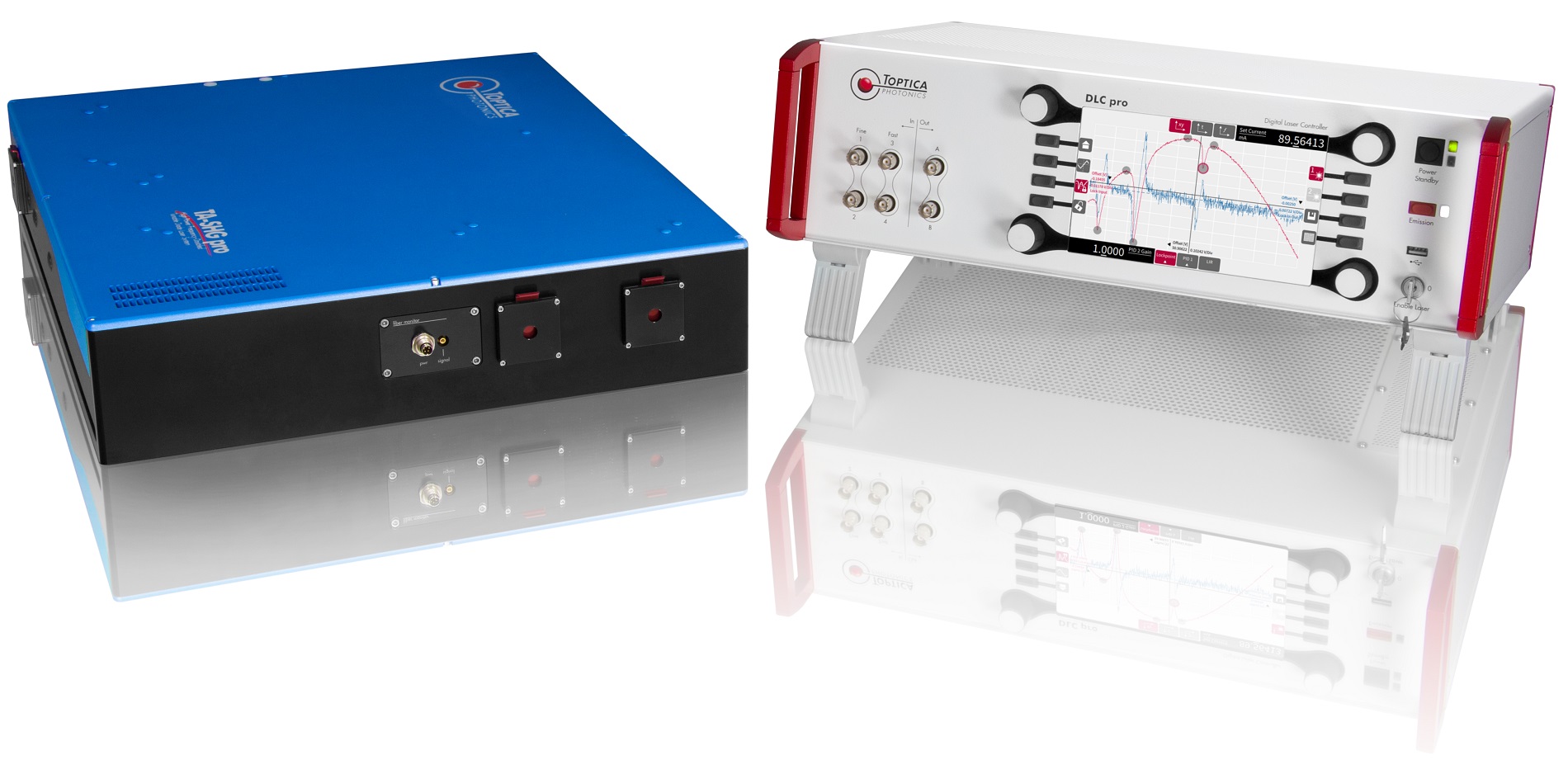05/22/2017
TOPTICA Photonics will present their innovative lasers at the LASER World of Photonics (hall B2, booth 103). With the latest product releases, TOPTICA is able to offer a complete laser wavelength coverage from deep-UV (190 nm) to terahertz radiation (0.1 THz, corresponding to 3 mm). These lasers support a multitude of applications in biophotonics & microscopy, materials & metrology and quantum technology.
Deep-UV wavelengths as small as 190 nm are now accessible with TOPTICA’s frequency-converted diode lasers. By providing essential wavelengths like 193 nm, 213 nm or 407 nm in pure cw TEM00-mode quality, the DLC TA-SHG/FHG pro is an ideal solution for testing and inspection or advanced material processing, e.g. lithography patterning for holographic applications. The new lasers provide the necessary power levels that are required for these applications. On top of that, they are much easier to handle at considerably lower operating costs.
Semicon inspection or Raman applications at 266 nm are supported by TOPTICA’s new TopWave 266. This industrial-grade, continuous-wave laser systems provides 150 mW. It stands out with its excellent power stability, low noise and extended lifetime that is realized with a digital control architecture and an optimized, completely sealed doubling cavity.
TOPTICA’s product line of tunable diode lasers now covers the full regime between 190 and 3500 nm. With the new MDL pro, these lasers become available in a transportable and compact design. It combines up to four tunable diode lasers in one 19-inch module with the same specifications as TOPTICA’s DL pro and DFB pro series. The digital low-noise DLC pro controller operates these lasers. Thus, the MDL pro combines excellent laser performance with the unique and easy to use standard electronic sub-racks. Such a transportable solution will advance the development of mobile experiments like optical clocks, quantum computers or sensors.
Experiments that require a reliable reference for optical frequencies like high-resolution spectroscopy or interferometry take advantage of TOPTICA’s low-noise frequency comb DFC CORE that provides light at individual wavelengths between 420 and 2200 nm. This system is now available in an integrated 19-inch rack, combined with wavelength extensions, beat units, stabilization electronics, wavelength meters, counters and diode lasers. This allows TOPTICA to provide complete stabilized laser systems that are compact and transportable. In addition, the system is controlled using only one central software for all integrated modules.
The new multi-laser engine iChrome CLE for biophotonics provides light at 405, 488, 561 and 640 nm with 20 mW each. It is the cost-effective system of choice for multi-color microscopy applications due to its compact design and economic operation. Since the 561 nm light is generated by a laser diode instead of solid state laser, this system can be directly modulated at high speed (1 MHz) while maintaining complete-off in the dark state. The iChrome CLE is the latest member of TOPTICA’s iChrome product line which also includes the power-champion iChrome MLE (up to 100 mW at four individual laser lines). All iChrome systems have a unified user interface, unique modulation features and COOLAC, TOPTICA’s proprietary and fully automated beam alignment algorithm.
For multiphoton microscopy, TOPTICA’s new FemtoFiber ultra lasers are excellent light sources. These ultrafast lasers provide powerful pulses centered at 780 nm (500 mW average power and below 150 fs pulse duration) or at 1050 nm (5 W average power with an unprecedented short pulse duration of typically 90-100 fs). They are ideal tools for multiphoton (SHG) microscopy, supercontinuum generation, material processing, as well as OPCPA or amplifier seeding.
Advanced material inspection becomes possible with TOPTICA’s recent FemtoFiber dichro midIR. This broadband mid-infrared laser (5-15 μm) is ideally suited for mid-infrared spectroscopy, as well as near-field studies. It provides tunable broadband pulses with more than 400 cm-1 bandwidth at 80 MHz repetition rate. The FemtoFiber dichro midIR is a unique tool for the chemical analysis of materials with nanoscale resolution, e.g. in near-field spectroscopy systems. Contact-free material characterization techniques with unprecedented data rates are now possible thanks to TOPTICA’s new TeraSpeed. This superfast terahertz sensing platform supports applications like non-destructive testing, plastic inspection or process control with a sampling rate of 100 million data points per second. The TeraSpeed complements TOPTICA’s unique portfolio of terahertz systems. The product range also includes the time-domain terahertz platform TeraFlash, which achieves an unsurpassed peak dynamic range of 90 dB and a bandwidth of 6 THz. In addition, the frequency-domain terahertz platform TeraScan allows for a frequency resolution better than 10 MHz and a dynamic range up to 100 dB.












